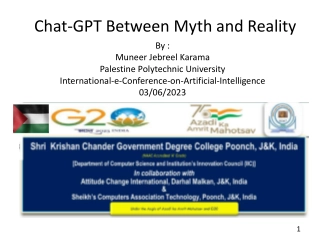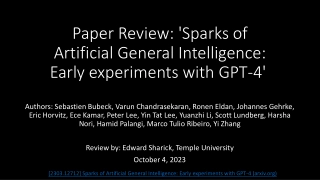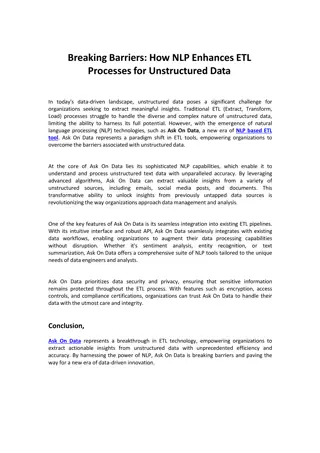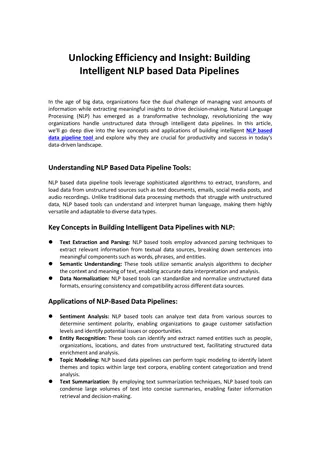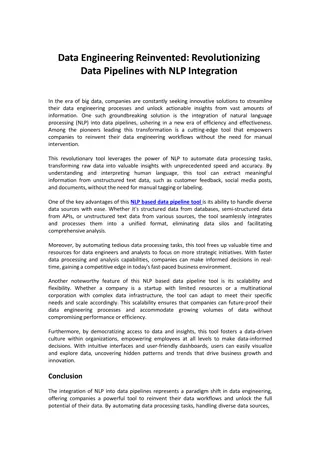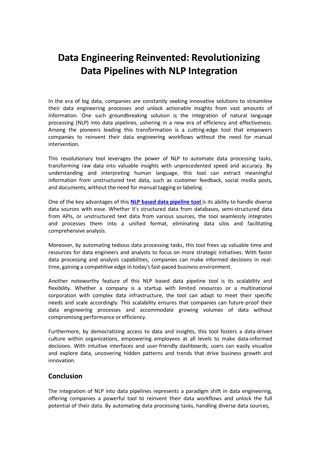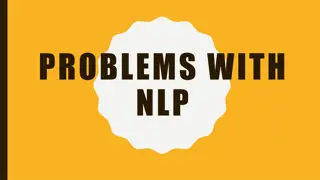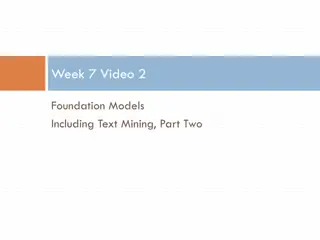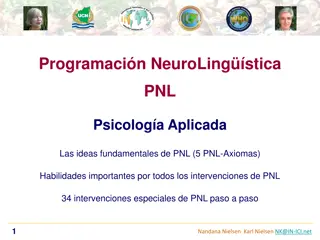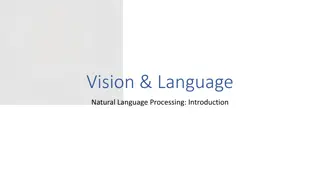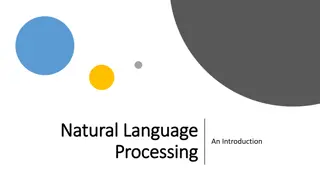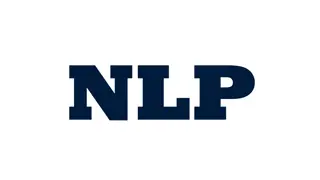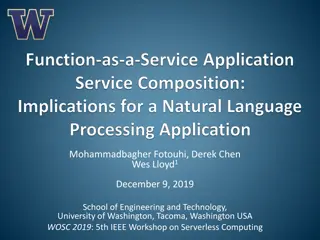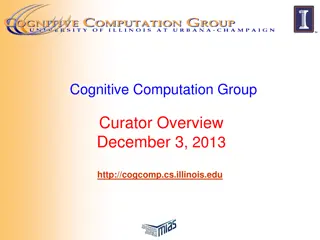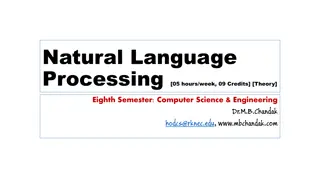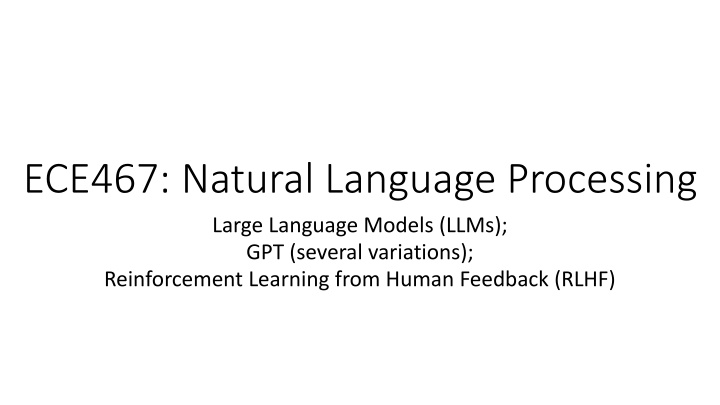
Large Language Models: GPT Variations and RLHF
Explore the realm of Large Language Models (LLMs) through a discussion of various GPT models and Reinforcement Learning from Human Feedback (RLHF). Delve into the significance of neural language models, scaling laws, and the evolution of language modeling.
Download Presentation

Please find below an Image/Link to download the presentation.
The content on the website is provided AS IS for your information and personal use only. It may not be sold, licensed, or shared on other websites without obtaining consent from the author. If you encounter any issues during the download, it is possible that the publisher has removed the file from their server.
You are allowed to download the files provided on this website for personal or commercial use, subject to the condition that they are used lawfully. All files are the property of their respective owners.
The content on the website is provided AS IS for your information and personal use only. It may not be sold, licensed, or shared on other websites without obtaining consent from the author.
E N D
Presentation Transcript
ECE467: Natural Language Processing Large Language Models (LLMs); GPT (several variations); Reinforcement Learning from Human Feedback (RLHF)
If you are following the suggested readings We will start this topic with a brief, general discussion about large language models This subtopic is related to Sections 10.1 10.5 of the textbook; Chapter 10 is titled "Large Language Models" (although I am not basic my content on the textbook's chapter) The majority of this topic will cover the several variations of GPT Much of the content of my slides is based on the original papers about different versions of GPT; there are links to a few of these papers on the course website Some aspects of the content is based on other sources (I will strive to reference them when appropriate) Along the way, we will discuss the called reinforcement learning from human feedback (RLHF) RLHF was an important component of the training for InstructGPT and ChatGPT Other concepts encountered during this topic will include few-shot learning, chain-of- thought prompting, and emergent abilities
Large Language Models As we have learned in previous topics, a language model is a model that assigns a probability to a sequence of text Conventionally (before the deep learning revolutions in NLP), N-grams were used for this purpose In modern NLP, neural language models dominate Traditional language models, including neural language models, work left-to-right (or right-to-left), predicting the next token in a sequence based on previous tokens Traditional language models can also be used to generate text one token at a time We have learned that BERT, on the other hand, is a masked language model; it predicts tokens given context from both sides Language models, in general, are pretrained based on some corpus of unlabeled natural language text using unsupervised machine learning approaches There is no general agreement as to how big a language model needs to be in order to be considered a large language model (LLM) I have seen some sources claim that GPT-3 was the first LLM; GPT-3 contains about 175 billion parameters I have seen other sources list BERT, developed about two years earlier, as an LLM; recall that BERTLARGE contains only 340 million parameters Some other sources list the original GPT (a.k.a. GPT-1), which was released a bit earlier than BERT as an LLM; GPT-1 contains approximately 117 million parameters (this was also the approximate size of BERTBASE)
Scaling Laws One interesting observation pointed out in several papers and discussed in Section 10.5 of the textbook is that LLMs seem to obey scaling laws This means that performance is predictable to a high degree of accuracy as the number of parameters, the amount of training data, or the amount of computation used for training grows Thus, we can improve performance of an LLM in a predictable way by adding more parameters, more training data, or more iterations of training However, one thing that the textbook does not make clear is that this is only true for performance as a language model (i.e., for what the system is trained to do) Other behaviors of LLMs (i.e., how well they will perform for other tasks) are not predictable as a model grows Other abilities may face unpredictable diminishing returns as models grow larger, and some abilities may even get worse There are also examples of emergent abilities (a.k.a. emergent behaviors) of large language models; we will discuss a couple of examples later Note that some recent papers have challenged the notion of emergent abilities We are not going to discuss scaling laws in further detail in this course
GPT-1: Basic Info GPT, which stands for "generative pre-trained transformer", is a family of systems developed by OpenAI The original paper that introduced the first version in 2018 was titled "Improving Language Understanding by Generative Pre-Training" by Radford et al. Note that this paper never actually uses the acronym GPT, nor does it specify the full name of the model; but now, some sources refer to the system described in that paper as GPT-1 Also note that GPT-1 was released before BERT by a few months, and the original BERT paper refers to GPT-1 frequently (calling it OpenAI GPT) GPT is pretrained as traditional language model, as opposed to BERT, which is trained as a masked language model Like BERT, GPT is built upon transformers; GPT-1 has about 117 million trainable parameters Also like BERT, GPT can produce contextual embeddings that can be used for other downstream tasks In theory, the contextual word embeddings could be fed as input to unrelated architectures, but that is not how GPT-1 was used in the original work Unlike BERT, GPT is built on a transformer decoder, as opposed to a transformer encoder We will discuss what this means on the next slide
Decoder-Only Architectures What does it mean to have a decoder-only architecture? The figure to the right revisits the original transformer architecture from the "Attention is All You Need" paper We discussed this figure when we covered transformers One difference between the encoder and the decoder is that the decoder adds a middle sublayer This is a cross-attention layer that attends to the output of the encoder Clearly, this sublayer cannot exist in a decoder-only architecture (and it does not exist in GPT) Another difference between the encoder and the decoder is that the self-attention layer in the decoder is masked GPT uses this sort of masked multi-head self-attention Thus, during pretraining, the model does not look to the right We will discuss the GPT-1 architecture in more detail on the following slide
GPT-1 Architecture and Pretraining Procedure The GPT-1 model consists of a "12-layer decoder-only transformer with masked self- attention heads" 12 attention heads were used in the original paper The self-attention layer is followed by a position-wise feed-forward sublayer, as explained in the original transformer paper Other design decisions (learning rate, vector sizes, etc.) are explained in the GPT-1 paper The model was pretrained using the BookCorpus (also mentioned during our topic in BERT) The pretraining objecting was standard language modeling (i.e., it was trained to predict the next token, given the previous tokens) For tokenization, byte-pair encoding (BPE) was used with an approximate vocabulary of size of 40,000 They pretrained "for 100 epochs on minibatches of 64 randomly sampled, contiguous sequences of 512 tokens"
GPT-1 Fine-tuning As with BERT, the GPT-1 research used fine-tuning to apply the system to various downstream tasks As we discussed during our topic on BERT, this is an example of transfer learning The figure on the next slide (from the original GPT-1 paper) helps to explain how this works The left of the figure shows the GPT-1 model, which was pretrained as a traditional language model, as previously explained The architecture is slightly modified at the top, after pretraining, for various types of NLP tasks, which are cast as classification tasks The right side of the figure helps explain how GPT-1 is the input is structured, and the architecture is slightly modified, for different types of downstream tasks We will discuss each type of task in more detail soon (in two slides) One interesting fact is that for all fine-tuning tasks, the fine-tuning includes language modeling (text prediction) as an auxiliary fine-tuning objective The paper claims that this improves generalization and accelerates convergence
GPT-1 Downstream Tasks The original paper reported evaluation GPT-1 on four types of tasks: Straightforward classification tasks The input is the text that needs to be classified The output of the transformer goes through a linear layer and a softmax (softmax is not shown in the figure) Entailment tasks The input included bot sentences or sequences being compared, with a delimiter in between The output of the transformer goes through a linear layer and a softmax Similarity tasks The researchers fed the two sequences being compared in both possible orders, with a delimiter in between The outputs were added elementwise before being sent through a linear layer Multiple choice tasks They include question answering in this category, where the possible answers are the choices, and they concatenate the document and question to form a context They feed the context followed by each possible answer, with a delimiter in between, separately through the transformer and a linear block, then apply a softmax to choose the best answer For all tasks, the input starts and ends with special tokens, and the final hidden state of transformer (corresponding to the last input token) is passed to the linear layer
GPT-2 (briefly) GPT-2 was introduced in a 2019 paper titled, "Language Models are Unsupervised Multitask Learners" by Radford et al. (all authors were from OpenAI) The paper evaluated four model sizes of GPT; the largest was named GPT-2 GPT included 48 layers and vectors of size 1600, leading to about 1.5 billion parameters GPT-2 was trained as a traditional language model using an OpenAI dataset known as WebText, created by scraping about 45 million links According to the GPT-2 paper, "after de-duplication and some heuristic based cleaning", the dataset "contains slightly over 8 million documents for a total of 40 GB of text" The focus of the paper is on zero-shot performance, which means that GPT-2 was applied to various tasks without any fine-tuning (I'll discuss this more in class) The zero-shot performance of GPT-2 was compared to zero-shot performance of other LLMs, and GPT-2 performed the best (in the zero-shot setting) for most tasks In the appendix of the GPT-2 paper, they showed various samples of completions of random text from the WebText test set (not samples it was trained on) These examples, showcasing the ability of GPT-2 to perform autoregressive generation of text, seemed very impressive at the time, and this even garnered considerable attention outside of the NLP community
GPT-3: Basic info GPT-3 was introduced in a 2020 paper titled, "Language Models are Few-Shot Learners" by Brown et al. All authors were from OpenAI, one also listed an affiliation with John Hopkins University The paper was relatively long; 75 pages including the bibliography and many appendixes, including almost 40 pages of text before the appendixes As with the GPT-paper, this paper evaluated several model sizes; the largest was named GPT-3 The table on the next slide (from the original GPT-3 paper) shows pertinent information about the various model sizes evaluated in the paper The largest model (the one named "GPT-3") contains about 175 billion parameters (trainable weights)! Apart from the size, the basic architecture of GPT-3 was mostly the mostly same as the previous versions of GPT (the GPT-3 paper points out a few minor changes to the architecture) This work also used a larger training corpus than the previous GPT papers The table in two slides shows the components of the corpus used to pretrain GPT as a traditional language model (which was the only training done there was no fine-tuning) The dataset included English Wikipedia, two online book corpora, an expanded version of WebText (the dataset used for GPT-2), and a filtered version of a dataset known as Common Crawl Common Crawl is a corpus of data collected by a non-profit organization (also called Common Crawl); this corpus was originally created in 2008, and it is frequently updated
GPT-3 Few-shot Learning The few-shot learning mentioned in the title does not involve fine-tuning Rather, a prompt given to GPT-3 (i.e., the text that it continues) shows examples of a pattern representing the type of task to solve Basically, this method treats all tasks as autoregressive generation tasks, using clever prompts From the abstract: "For all tasks, GPT-3 is applied without any gradient updates or fine-tuning, with tasks and few-shot demonstrations specified purely via text interaction with the model." The figure on the next slide (from the original GPT-3 paper with the caption removed) helps explain the difference between few-shot learning vs. other forms of learning Zero-shot learning (the form primarily explored for GPT-2) simply prompts the system to perform a task One-shot learning adds a single example to the prompt, whereas few-shot learning adds a few examples (the caption states that they "typically present the model with a few dozen examples in the few shot setting") Fine-tuning is also shown, but was not explored with GPT-3 in this paper GPT-3 was evaluated for many tasks, achieving impressive performance for several From the abstract: " scaling up language models greatly improves task-agnostic, few-shot performance, sometimes even reaching competitiveness with prior state-of-the-art finetuning approaches" They even tested arithmetic; the figure two slides from now shows how model size affects performance
InstructGPT InstructGPT, sometimes called GPT-3.5, is described in the 2022 paper "Training language models to follow instructions with human feedback" by Ouyang et al. InstructGPT is a modified version of GPT-3 that was fine-tuned to do a better job following instructions This involved a three-step process (the figure on the next slide, from the original paper, helps to explain it): 1. First, they fine-tuned the system using supervised ML, using a dataset collected from human volunteers, consisting of prompts and responses 2. Next, they train a reward model using supervised ML to predict how good a response is, also based on a training set consisting of actual responses and human rankings 3. Third, they use the reward model, and reinforcement learning (RL), to continue fine-tuning the system; the specific form of RL they use is called proximal policy optimization (PPO) All together, the procedure above is known as reinforcement learning from human feedback (RLHF) They trained three separate sizes of the model, ranging in size from 1.3 billion to 175 billion parameters (the same size as GPT-3) Based on additional evaluation with human volunteers, the authors conclude that "labelers significantly prefer InstructGPT outputs over outputs from GPT-3" Evan the smallest InstructGPT model produced output in response to instructions that was usually preferred to the output of GPT-3, even though the number of parameters was smaller by a factor of over 100
Chain-of-Thought Prompting Chain-of-thought prompting (CoT prompting) is a method to elicit better reasoning for certain types of tasks from an LLM This has been documented in several papers, including the 2023 paper "Large Language Models are Zero-Shot Reasoners" by Kojima et al. There are several datasets to test a model's performance on word problems involving multiple logical or arithmetic steps, requiring common sense (e.g., CommonSenseQA) When fed the question as a prompt, ending with a phrase such as "The answer is", asking an LLM to continue the text, LLMs don't typically perform well on such tasks It turns out that by including a sentence such as "Let's think step by step" to the end of the prompt, instead of a request for the answer directly, the performance improves significantly Additionally, this generally causes the LLM to provide an explanation for the answer that is helpful for the user CoT prompting can also be used to improve the performance of few-shot learning The figure on the next slide (from the paper) shows an example of how CoT prompting leads to better answers (for both zero-shot and few-shot performance) for a particular question
Emergent Abilities Emergent abilities (a.k.a. emergent behaviors) of LLMs are abilities that the models only gain after they become large enough These are sometimes discovered after an LLM is released, sometimes by users as opposed to the developers Often, they are unexpected (i.e., they were not predicted ahead of time by the developers) Few-shot learning and chain-of-thought prompting are both examples of emergent abilities Some studies have found that these emergent abilities are not present at all when tested on smaller models That is, as various model sizes are tested, the ability seems to not be present at all until the model reaches a certain size, then suddenly is appears at a strong level At least one recent paper has questioned whether this patter of emergent abilities has to do with the metrics used to measure the abilities in question Assuming emergent abilities appear suddenly when a model reaches a certain size, this leaves researchers wondering what additional abilities may appear as models continue to grow
ChatGPT (briefly) ChatGPT was released to the public in late 2022; it was originally based on GPT-3.5 (as was InstructGPT) As virtually everyone is aware, ChatGPT because hugely popular extremely fast OpenAI did not release a technical paper about ChatGPT, like they did with previous versions of GPT However, they did post some information about it on a website, available here: https://openai.com/index/chatgpt/ The website calls ChatGPT a "sibling model to InstructGPT" The website also states: "We trained this model using Reinforcement Learning from Human Feedback (RLHF), using the same methods as InstructGPT, but with slight differences in the data collection setup."
GPT-4 (briefly) The free version of ChatGPT now uses variations of GPT-4 If you pay for ChatGPT Plus, you have more access to GPT-4o The free version has very limited access to GPT-4o, and otherwise reverts to GPT-4o mini OpenAI released a paper titled "GPT-4 Technical Report" in March 2024 I have not read this paper yet (including appendices, it contains 100 pages), but based on initial skimming, the paper focuses on the abilities, limitations, and safety properties (related to ethics) of GPT-4 The last appendix is a system card, which is itself is 60 pages and has sub-appendices Notably, the paper does not discuss the architecture details of GPT-4 Based on other sources, OpenAI has never officially released the size of GPT-4, but the system is rumored to have over one trillion parameters! Based on experimentation and some initial reading, new features introduced to GPT-4 include: It can browse the web It can interact with certain other tools It can write and execute code It can process uploaded documents It can create certain types of documents It can store important facts learned from a conversation in memory

